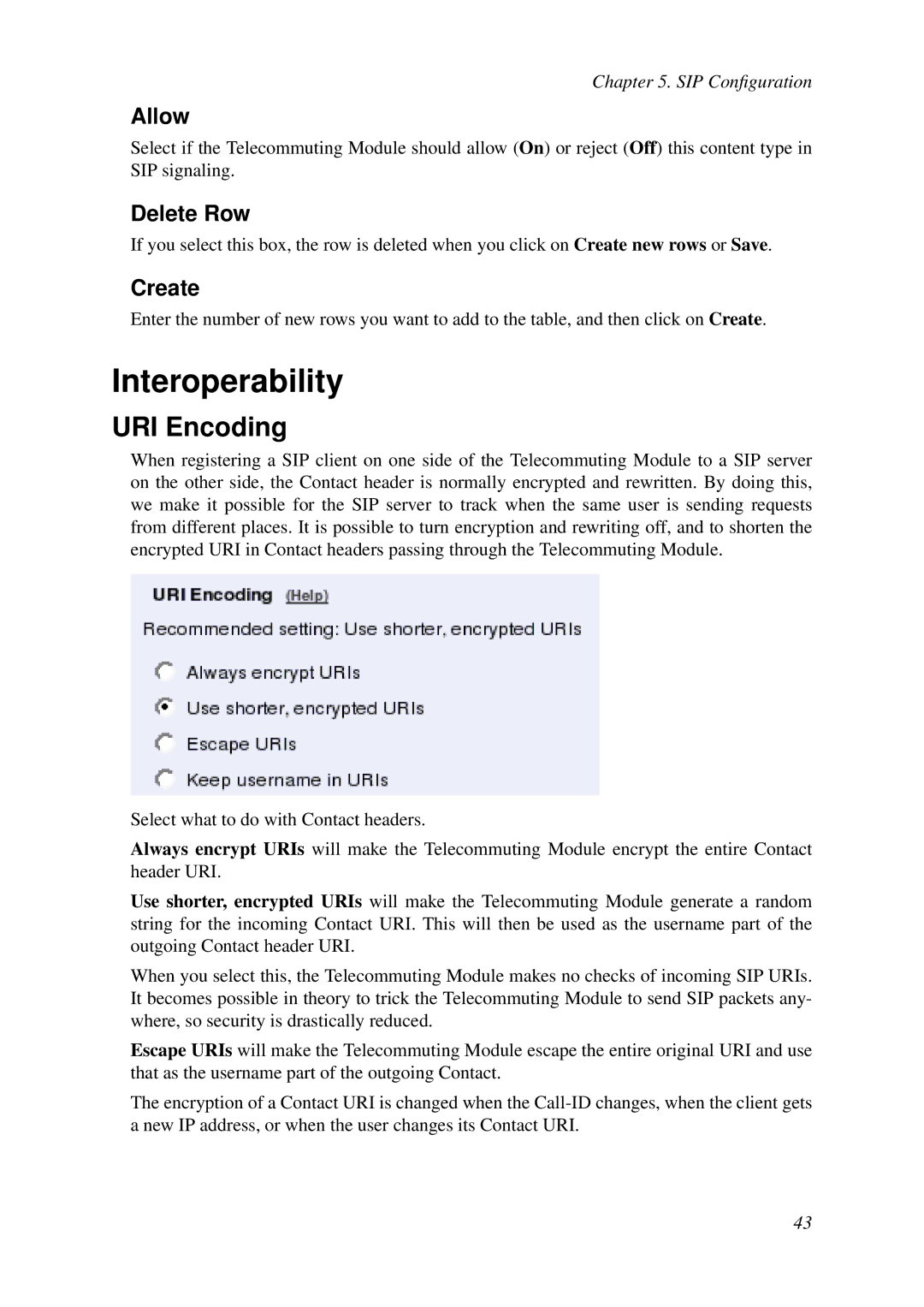
Chapter 5. SIP Configuration
Allow
Select if the Telecommuting Module should allow (On) or reject (Off) this content type in SIP signaling.
Delete Row
If you select this box, the row is deleted when you click on Create new rows or Save.
Create
Enter the number of new rows you want to add to the table, and then click on Create.
Interoperability
URI Encoding
When registering a SIP client on one side of the Telecommuting Module to a SIP server on the other side, the Contact header is normally encrypted and rewritten. By doing this, we make it possible for the SIP server to track when the same user is sending requests from different places. It is possible to turn encryption and rewriting off, and to shorten the encrypted URI in Contact headers passing through the Telecommuting Module.
Select what to do with Contact headers.
Always encrypt URIs will make the Telecommuting Module encrypt the entire Contact header URI.
Use shorter, encrypted URIs will make the Telecommuting Module generate a random string for the incoming Contact URI. This will then be used as the username part of the outgoing Contact header URI.
When you select this, the Telecommuting Module makes no checks of incoming SIP URIs. It becomes possible in theory to trick the Telecommuting Module to send SIP packets any- where, so security is drastically reduced.
Escape URIs will make the Telecommuting Module escape the entire original URI and use that as the username part of the outgoing Contact.
The encryption of a Contact URI is changed when the
43
